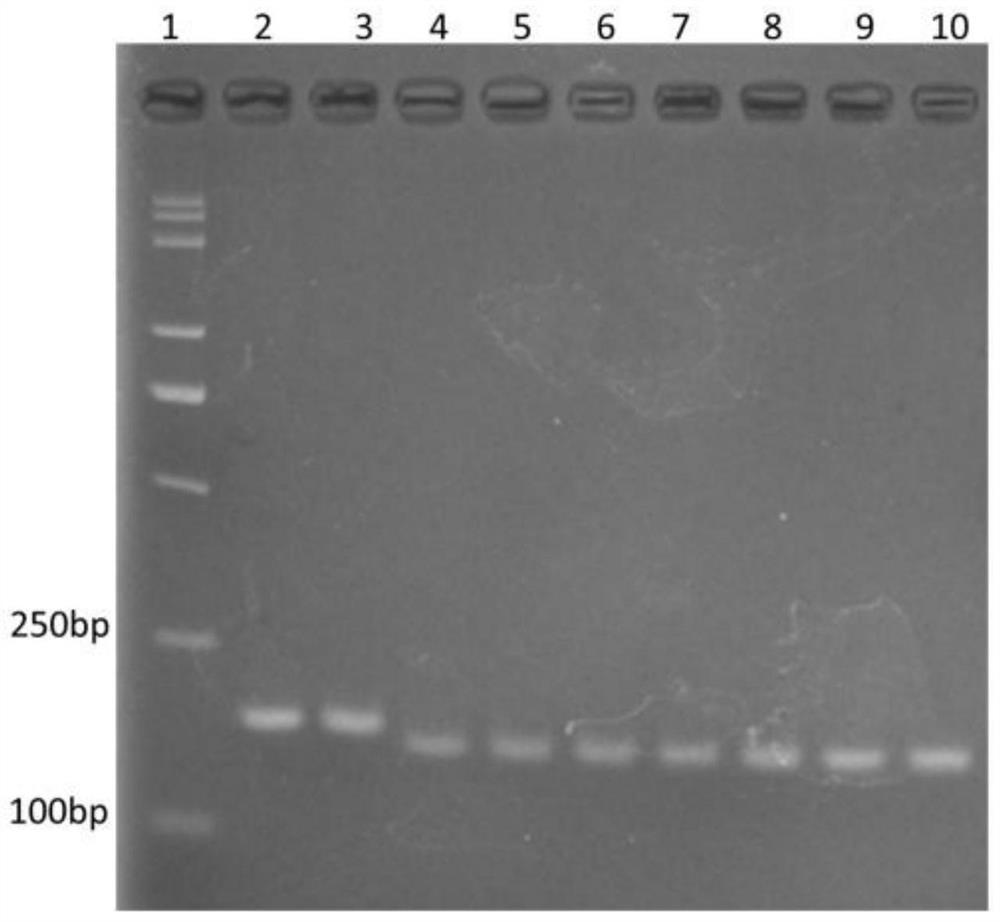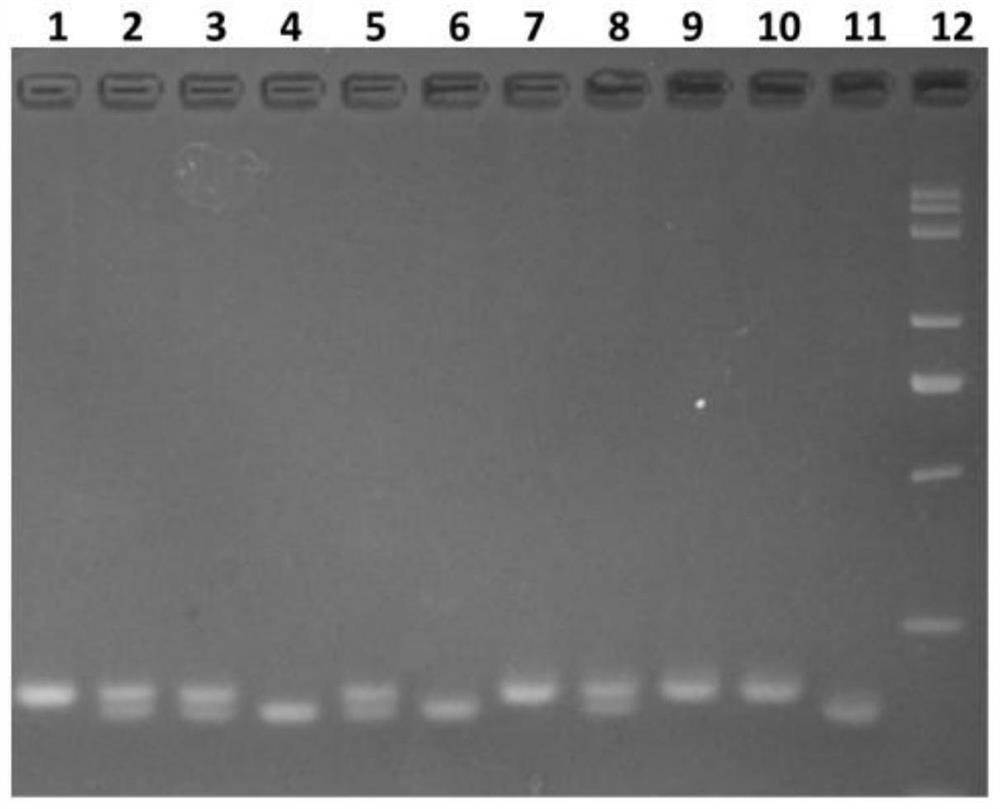Specific indel molecular marker primer for detecting rice osnramp5 gene and its application
A molecular marker, rice technology, applied in DNA/RNA fragmentation, application, plant genetic improvement, etc., can solve the problem of materials cannot be used quickly, and achieve the effect of alleviating cadmium pollution, high accuracy, and alleviating stress
- Summary
- Abstract
- Description
- Claims
- Application Information
AI Technical Summary
Problems solved by technology
Method used
Image
Examples
Embodiment 1
[0042] A specific InDel molecular marker primer for detecting cadmium accumulation traits of rice OsNRAMP5 gene, including forward primer F (named P5-C8F) and reverse primer R (named P5-C8R) shown in Table 1 below.
[0043] Table 1: Specific InDel molecular marker primers for breeding rice with low cadmium accumulation
[0044] name base sequence P5-C8F CAATCCAAGACCCGGCATGAT (as shown in SEQ ID NO.1) P5-C8R GCGCCGCATAGGATTAGTTGA (as shown in SEQ ID NO.2)
[0045] Through the variation analysis of the OsNRAMP5 gene coding region in the resequenced rice materials, we found that Luohong 3A and Luohong 4A had a large fragment deletion variation in the region containing the OsNRAMP5 gene, and the large fragment deletion variation corresponds to the 7th position of the reference genome Shuhui 498 Chromosome 8899016-9307728 bases (sequence length about 408kb), this large fragment deletion mutation contains the entire OsNRAMP5 gene (OsNRAMP5 position is 8...
Embodiment 2
[0059] The application of the specific InDel molecular marker primer of embodiment 1 in the selection and breeding of rice with low accumulation of cadmium comprises the following steps:
[0060] (1) Use Luohong 3A as the donor and 9311 rice as the recipient;
[0061] (2) hybridizing donor and acceptor materials to obtain hybrid F1 generation seeds, and selfing F1 generation seeds to obtain F2 generation seeds;
[0062] (3) In the F2 generation population, specific InDel molecular marker primers were used for detection. The detection method was the same as in Example 1, and the plants with homozygous OsNRAMP5 gene deletion were screened out in the F2 generation population, which were rice materials with low cadmium accumulation.
[0063] For the isolated progeny produced by selfing in step (3), the specific InDel molecular marker primers were used to detect, and the isolated individuals were measured for cadmium content in stems and leaves at the seedling stage. The results ar...
Embodiment 3
[0068] The application of the specific InDel molecular marker primer of embodiment 1 in the selection and breeding of rice with low accumulation of cadmium comprises the following steps:
[0069](1) Luohong 4A was used as the donor, and the non-cadmium low-accumulation rice variety Yuzhenxiang was used as the acceptor;
[0070] (2) crossing the donor and acceptor materials to obtain hybrid F1 generation seeds, and backcrossing the F1 generation seeds and acceptor materials to obtain BC1F1 generation seeds;
[0071] (3) Use specific InDel molecular marker primers to detect in the BC1F1 generation population. The detection method is the same as in Example 1. In the BC1F1 population, the plants with heterozygous OsNRAMP5 gene deletion are screened out and then further selfed to obtain the offspring population The specific InDel molecular marker primers were used for detection, and the plants with homozygous OsNRAMP5 gene deletion were screened out, which were rice materials with ...
PUM
 Login to View More
Login to View More Abstract
Description
Claims
Application Information
 Login to View More
Login to View More - R&D Engineer
- R&D Manager
- IP Professional
- Industry Leading Data Capabilities
- Powerful AI technology
- Patent DNA Extraction
Browse by: Latest US Patents, China's latest patents, Technical Efficacy Thesaurus, Application Domain, Technology Topic, Popular Technical Reports.
© 2024 PatSnap. All rights reserved.Legal|Privacy policy|Modern Slavery Act Transparency Statement|Sitemap|About US| Contact US: help@patsnap.com










